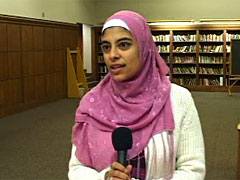broadband / modem
Audio only
Published: February 2006
College students agonizing today over which minor program—leadership studies, economics, human rights, or casino resort management—will give them the best professional edge in a competitive job market might look back with envy on their medieval counterparts.
Life in the Middle Ages may have been nasty and brutish, but at least the university course catalogues were short, and there were no majors and minors to worry about. From Oxford to Bologna, the offerings were the same: the trivium—grammar, rhetoric, logic—and the quadrivium—arithmetic, geometry, astronomy, and music.
Even as late as the early 20th century, says John Thelin, author of A History of American Higher Education (Johns Hopkins, 2004), it was unusual for an undergraduate to declare a “major” field, let alone a minor. Under the 40-year presidency of Charles William Eliot, from 1869, Harvard pioneered the format of students choosing a “concentration” within a system of electives, says Thelin, but the major/minor system as we know it evolved rather in the emerging universities of the Midwest and West to give some coherence to curricula that included courses ranging from art history to animal husbandry.
Minors have traditionally ensured that students gain some depth in a field of study beyond their chosen major. They are also markers for social change, such as the ethnic studies programs that blossomed in the late 1960s as by-products of the civil rights movement, and the women’s studies courses that started out as minors in the 1970s, and are now an established part of the curriculum in nearly 800 institutions.
At Boston College, the focus on minors has been careerist (myriad programs within the professional schools) and disciplinary (19 departmental minors in the College of Arts and Sciences). But the University’s most distinctive set of minors are the 16 interdisciplinary programs within A&S, which currently enroll some 600 undergraduates. These began in the late 1970s and early 1980s with black studies, Irish studies, and American studies, says Carol Hurd Green, a dean in the College of A&S who has directed and encouraged interdisciplinary minor programs from their beginnings.
For A&S students, says Green, the desire for minor programs is driven less by a concern about employment prospects than about admission to graduate school. “They ask: ‘How will anyone know I studied this?’ ” For faculty, she says, the issue is intellectual delight. “What they get for developing these programs is simply the pleasure of working in these areas with faculty who are similarly focused.”
The process of developing a minor and guiding it through the A&S approval process usually takes about two years, but has in one case taken as long as 10. Some minors, like Middle Eastern studies, came and went and then were revivified by new faculty and raised by tides of history.
Green, who herself holds a doctorate in American studies, says that the number of interdisciplinary minors has grown recently because younger faculty, who are now rising to leadership positions at the University, were trained in ways that encouraged work across disciplines. “The changes in the way scholarship is done have caught up with the way curricula are designed” in higher education, she said.
The A&S Minors Fair that took place in Fulton Hall on November 4, 2005 was the first at Boston College. By the time the next annual fair is held, the list is expected to include a new entry, Catholic studies. It will come on the heels of the approval of a Jewish studies minor last spring—one of a very few at American Catholic universities.

